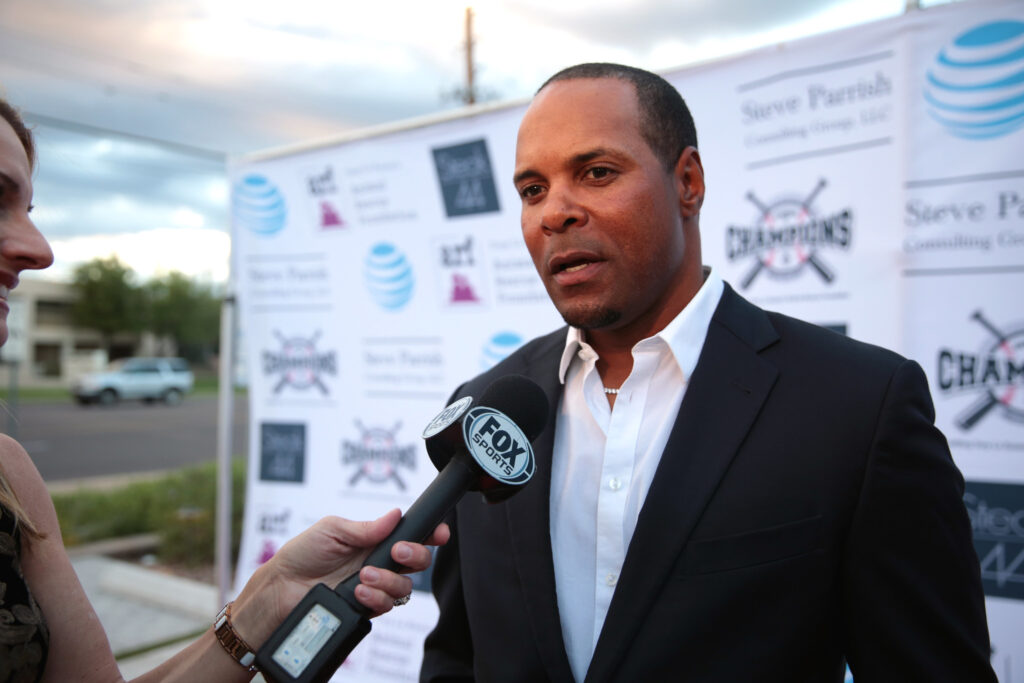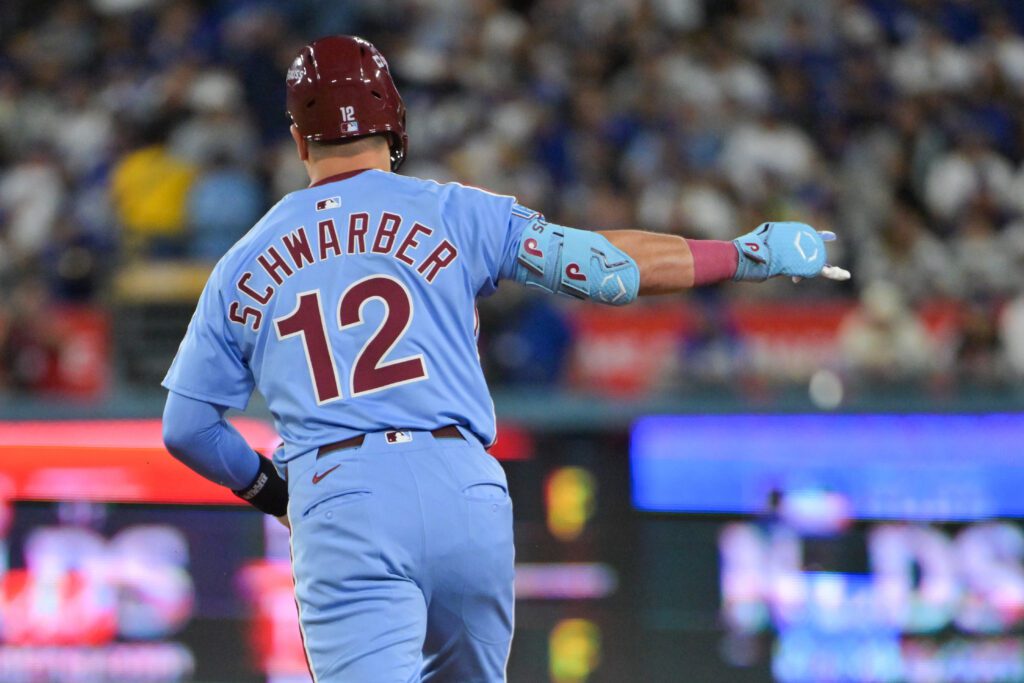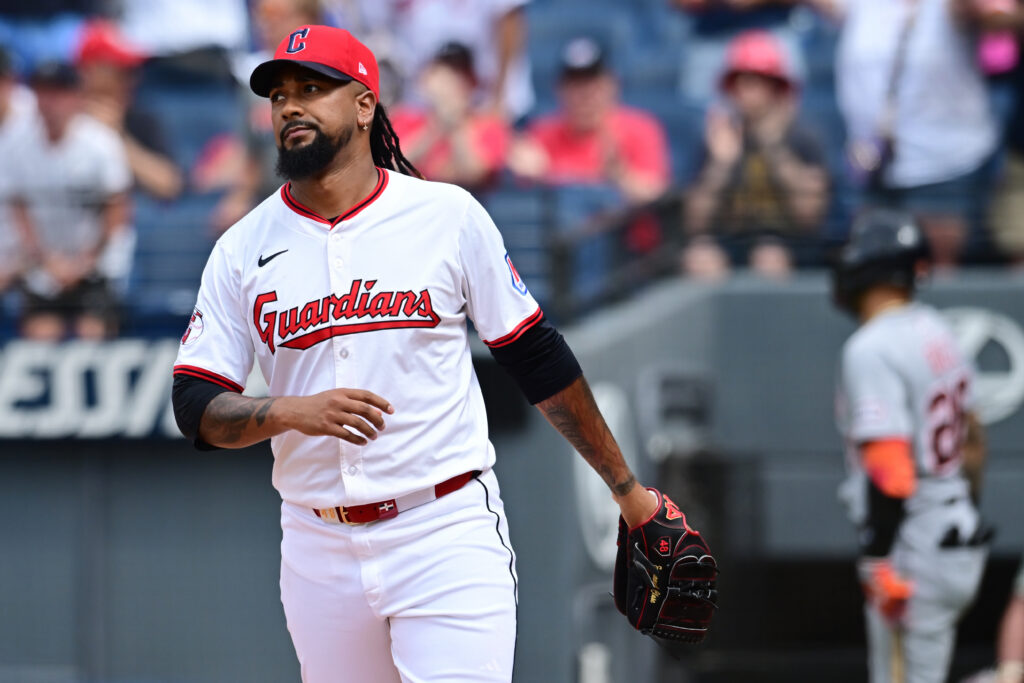This is the third article in a series that looks at the five best players at each position for the Cincinnati Reds. In this installment are second basemen and shortstops.
Choosing a starter at each middle infield spot for the Reds was difficult. Second base has a three-way battle between a leading member of the “Big Red Machine,” one star from the 21st century, and one who was arguably the greatest at his position in the 1800s. The starting shortstop spot will be contested between an underrated member of the Cincinnati teams of the 1970s and the most decorated player for the franchise over the past 40 years.
The Best Middle Infielders in Cincinnati Reds History
Second Basemen
Honorable Mentions – Hughie Critz won three fielding titles and hit .280 in 802 games over seven seasons in Cincinnati (1924-30). Miller Huggins was a solid fielder during his six-year run with the Reds (1904-09) and led the league in walks twice. “Mighty Mite” set career highs with 117 runs, 154 hits, and 38 RBIs in 1905 and stole a career-best 41 bases the following year. Huggins had 734 hits, 154 RBIs, and 150 steals in 783 games. However, he is best known for his time managing the “Murderer’s Row” Yankees to three World Series titles during the 1920s.
Linus “Lonny” Frey missed two years during World War II, but he was selected to three All-Star Games in his seven-year run with the Reds (1938-43 and 46). In 1940, he set career highs with 102 runs and 22 stolen bases, which also led the National League. Frey totaled 541 runs, 937 hits, 158 doubles, and 310 RBIs in 941 games. However, he was not as successful in the postseason, going 0-for-19 in seven games in two World Series in 1939-40.
Johnny Temple was a four-time All-Star and a solid fielder who put up career highs in 1959 with a .311 average, 102 runs, 186 hits, 35 doubles, eight home runs, and 67 runs batted in. Overall, he batted .291 and amassed 533 runs, 1,058 hits, 300 RBIs, and 105 stolen bases in 984 games over nine seasons (1952-59 and 64).
Ron Oester played all of his 13 seasons with the Reds (1978-90) and was the starter in eight of them. The 1988 Hutch Award winner had 1,118 hits and 344 RBIs in 1,276 games. In his final season, he went 2-for-4 with a run scored and an RBI in five playoff games.
Bret Boone was an All-Star selection and gold glove winner in 1998 when he hit .266 with 24 home runs, 95 RBIs, and a career-high 38 doubles. In five years with Cincinnati (1994-98), he had 634 hits, 70 homers and 346 RBIs in 684 games. Boone had six hits, five runs scored, and a home run in five games during the 1995 playoffs.
5. Pete Rose – He started at four different positions throughout his career, beginning with a four-year stint at second base (1963-66). The Cincinnati native earned Rookie of the Year honors in 1963 and earned his first All-Star selection two years later when he hit .312 with 117 runs, 35 doubles, 11 triples, a career-high 81 runs batted in, and a league-leading 209 hits. Rose batted .294 with 723 hits 111 doubles and 226 RBIs in 611 games at second base.
4. Tommy Helms – He spent eight years with the Reds (1964-71), beginning with three years at third base before transferring to second and moving Rose to the outfield in 1967. In five years at the keystone position, Helms earned two All-Star selections and two gold glove awards. He was named Rookie of the Year in 1966 after hitting .284 with 49 runs batted in and career-high totals of nine home runs, 72 runs, and 154 hits. During his Cincinnati tenure, he batted .269 with 858 hits and 274 RBIs in 851 games. Helms had seven hits and scored a run in eight games during the 1970 playoffs.
3. Brandon Phillips – He earned three All-Star selections, four gold gloves, and was a silver slugger in 2011 during his 11-year career with Cincinnati (2006-16). Phillips hit .288 in 2007 with 94 runs batted in, 32 stolen bases, and career highs with 107 runs, 187 hits, and 30 home runs. In 2013, he hit 18 homers and drove in a career-best 103 runs. For his Reds career, “Dat Dude” hit .279 with 191 home runs, 851 runs batted in, and 194 stolen bases. He ranks eighth in team history in games (1,614), ninth in doubles (311), tenth in hits (1,774) and total bases (2,722), and tied for tenth in runs (877). The 2012 Wilson Defensive Player of the Year at second base had 13 hits, three runs, four doubles, two homers, and eight RBIs in nine career playoff games.
2. John “Bid” McPhee – Considered by many to be the best second baseman of the 19th century, he was a star both on offense and defense during his 18-year career (1882-99) spent entirely with Cincinnati. Despite playing without a glove, McPhee won eight fielding titles and was among the first to create the trend of the second baseman playing to the left of the base (instead of on the base as was the custom at that time). He scored 100 or more runs, had 10 or more triples, and stole at least 30 bases 10 times apiece.
McPhee set a franchise record with 139 runs in 1886, led the American Association in runs and home runs (with eight) that season, and topped the circuit with 19 triples the following year. He also had at least 50 steals in four straight seasons, with a career-high of 95 in 1887 (which is the third-most in a season in franchise history). McPhee is the team’s all-time leader in steals (568) and triples (189), and he ranks second in runs (1,684), fourth in hits (2,258), and RBIs (1,072), fifth in games (2,138), seventh in total bases (3,098) and tenth in doubles (303). He is also the all-time Major League leader in putouts by a second baseman with 6,552. McPhee was elected to the Baseball Hall of Fame by the Veteran’s Committee in 2000, more than 100 years after his Major League career ended.
1. Joe Morgan – While his overall numbers are not as good as McPhee’s, he arguably did more in half the time. Morgan spent eight seasons with the Reds (1972-79), was selected as an All-Star selection each year (he was named game MVP honors in 1972), won five straight gold gloves, led the league four times in on-base percentage, went to the World Series three times and won two titles. “Little Joe” produced in a big way, winning back-to-back National League MVP awards in the middle of the “Big Red Machine’s” decade of dominance. In 1975, he had 107 runs, 163 hits, 17 home runs, 94 RBIs and set career highs with 67 stolen bases (matched in 1973) and a .327 average. The following year, Morgan hit .320 and totaled 113 runs, 151 runs, and 60 steals to go along with career-bests of 27 homers and 111 runs batted in.
Morgan ranks second in franchise history with 406 stolen bases (with six seasons of 40 or more), and he also hit .288 with 816 runs (including a league-high 122 in 1972), 1,155 hits, 220 doubles, 152 home runs and 612 RBIs in 1,154 games. His production fell off a bit in his final two seasons, so in 1980, he returned to the Astros, where he played his first nine seasons, and he bounced around to four teams over his final five years before retiring in 1984. After his playing career, Morgan turned to broadcasting, and he was the first color commentator alongside Jon Miller on ESPN’s Sunday Night Baseball, a role he held from 1990 to 2010. Morgan was elected to the Baseball Hall of Fame in his first year of eligibility in 1990. He also served on the museum’s Board of Directors for 27 years, eventually rising to the position of Vice Chairman.
Shortstops
Honorable Mentions – George “Germany Smith” was a star with the Reds for six seasons before the turn of the 20th century (1891-96). His best year was 1895 when he set career highs with a .300 average, 151 hits, and 74 runs batted in. The 1893 fielding champion totaled 756 hits, 384 runs, and 396 RBIs in 783 games. Eddie “Eppie” Miller was a four-time All-Star and a two-time fielding champion during his seven years with Cincinnati (1936-37 and 43-47). His best season with the Reds was his last when he set career highs with 19 home runs, 87 runs batted in, and 38 doubles (a total that also led the National League). However, Miller was a light hitter overall, batting only .207 with 555 hits and 303 RBIs in 707 games.
5. Roy McMillan – During his 10-year tenure with the Reds (1951-60), he was a two-time All-Star and a three-time gold glove winner. McMillan had 497 runs, 1,074 hits, 178 doubles and 394 RBIs in 1,348 games.
4. Leo “Chico” Cardenas – He was a four-time All-Star during his nine seasons in Cincinnati (1960-68), and he also won a gold glove in 1965. His two best seasons offensively were 1962, when set career highs with a .294 average, 77 runs, and 173 hits, and 1966, when he posted career bests with 20 home runs and 81 runs batted in. Known as “Mr. Automatic,” Cardenas had 1,058 hits, 182 doubles, 78 homers, and 413 RBIs in 1,157 games. He came off the bench to go 1-for-3 with a double in the loss to the Yankees in the 1961 World Series.
3, Tommy Corcoran – He won two fielding titles in ten seasons around the turn of the 20th century (1897-1906). Corcoran had his best season in 1899 when he hit .278 with 93 runs, 150 hits, 89 runs batted in, and 32 stolen bases. Overall, he had 596 runs, 1,206 hits, 180 doubles, 72 triples, 613 RBIs, and 186 steals in 1,229 games.
Corcoran also uncovered a major sign-stealing campaign in baseball’s early days. In Philadelphia’s Baker Bowl, there was a wooden box with wires in it buried beneath the coaches’ box by third base. Phillies backup catcher Morgan Murphy would sit in the clubhouse in center field and use a telescope to steal the opposing pitcher’s sign and send an electrical signal to the box based on the pitch to be thrown. Third base coach Pearce Chiles would stand in a small puddle of water in the box to get the signals (which made his legs noticeably twitch), then relay the pitch to the batter. Corcoran noticed the leg twitch and started digging, finding the box before he could be stopped by security or Philadelphia manager Bill Shettsline. However, much like the Red Sox allegedly using an Apple Watch or the Astros’ elaborate sign-stealing scheme in the past decade, no punishment came to the Phillies who actively participated. The umpire just made Chiles stand in another spot and kept the game moving.
2. Dave Concepcion – While Rose, Bench, Perez, and Morgan get most of the fanfare for the “Big Red Machine,” Concepcion was a steady performer throughout his 19-year career (1970-88) spent entirely with Cincinnati. He earned nine All-Star Star selections (he hit a two-run home run and was named the MVP of the game in 1982), five gold gloves, and two Silver Slugger awards. Concepcion’s best year at the plate was 1979, when the hit .281 with 166 hits and set career highs with 91 runs, 16 home runs, and 84 runs batted in. For his career, he batted .267 with 101 homers.
He ranks second in franchise history in games (2,488), third in hits (2,326), fourth in doubles (389), sixth in steals (321) and total bases (3,114), seventh in runs (993) and eighth in RBIs (950). Concepcion played in four World Series and won two titles. In 34 career postseason contests, he had 30 hits, 13 runs, four doubles, three triples, two home runs, 13 RBIs and seven stolen bases.
1. Barry Larkin – Like Rose, he was a Cincinnati native who spent a long time with his hometown franchise. After playing for Team USA in the 1984 Summer Olympics, Larkin joined the Reds and spent his entire 19-year career with the team (1986-2004). He won the Roberto Clemente Award in 1993 and the Lou Gehrig Award in 1994, but it was the following season when he earned his greatest honor. In 1995, Larkin had 98 runs, 158 hits, 15 home runs, 66 runs batted in, and a career-high 51 stolen bases to win the MVP Award. The following year, he hit .298 with 32 doubles, 36 steals, and career highs in runs (117), homers (33), and RBIs (89). His performance made him the first shortstop to join the 30-30 club.
Larkin was a 12-time All-Star, a nine-time silver slugger and a three-time gold glove winner. In his career, he hit .295 with 198 home runs. He ranks second on the all-time franchise list with 2,340 hits, and he sits third in games (2,180), runs (1,329), doubles (441) and stolen bases (379), fourth in total bases (3,527) and seventh in RBIs (960). Larkin was a part of Cincinnati’s title team in 1990, and he had 24 hits, 11 runs, five doubles, three RBIs, and eight steals in 17 career playoff games. He was inducted into the Baseball Hall of Fame in 2012.
Upcoming Stories
Cincinnati Reds Catchers and Managers
Cincinnati Reds First and Third Basemen
Cincinnati Reds Outfielders – coming soon
Cincinnati Reds Pitchers – coming soon
Previous Series
A look back at the Chicago White Sox
Chicago White Sox Catchers and Managers
Chicago White Sox First and Third Basemen and Designated Hitters
Chicago White Sox Second Basemen and Shortstops
Chicago White Sox Outfielders
Chicago White Sox Pitchers
A look back at the Chicago Cubs
Chicago Cubs Catchers and Managers
Chicago Cubs First and Third Basemen
Chicago Cubs Second Basemen and Shortstops
Chicago Cubs Outfielders
Chicago Cubs Pitchers
A look back at the Boston Red Sox
Boston Red Sox Catchers and Managers
Boston Red Sox First and Third Basemen
Boston Red Sox Second Basemen and Shortstops
Boston Red Sox Outfielders and Designated Hitters
Boston Red Sox Pitchers
A look back at the Baltimore Orioles
Baltimore Orioles Catchers and Managers
Baltimore Orioles First and Third Basemen
Baltimore Orioles Second Basemen and Shortstops
Baltimore Orioles Outfielders and Designated Hitters
Baltimore Orioles Pitchers
A look back at the Atlanta Braves
Catchers and Managers
First and Third Basemen
Second Basemen and Shortstops
Outfielders
Pitchers
A look back at the Arizona Diamondbacks
Catchers and Managers
First and Third Basemen
Second Basemen and Shortstops
Outfielders
Pitchers



